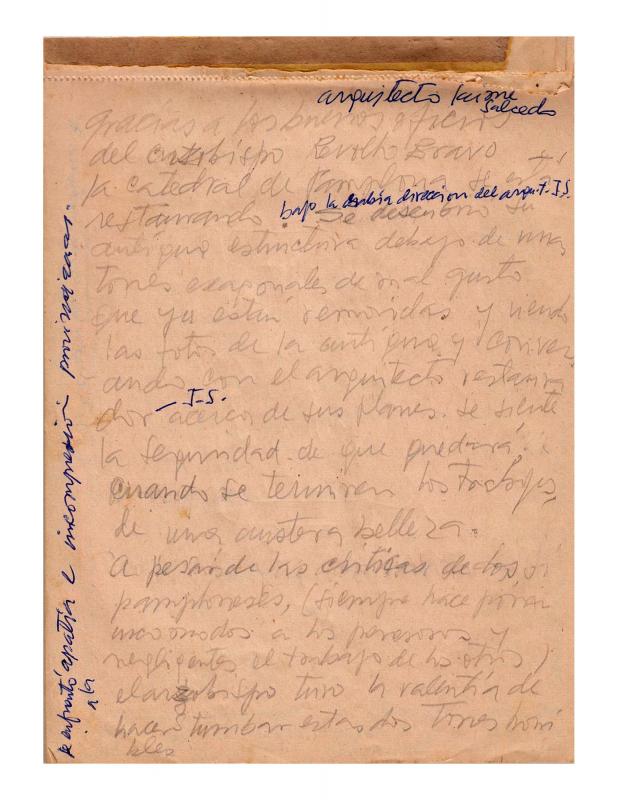In the text “El arte clásico de Eduardo Ramírez Villamizar” (1922–2004), Casimiro Eiger—a Polish critic who lived in Colombia—discusses Ramírez Villamizar’s abstract work as essentially self-referential because it is bound to form and to the material aspects of painting and objects. Over fifty years after the publication of this text, the notion of abstraction in Ramírez Villamizar’s work that it puts forth continues to be relevant in certain contexts. Eiger asserts that Ramírez Villamizar is an artist in pursuit of absolute truth, who through abstraction, creates pictorial spaces with no reference whatsoever beyond the sphere of art. Ramírez Villamizar is presented as a classic sculptor insofar as a conscious and rational use of materials enables him to release his work from “the creations of nature.” Eiger claims that Ramírez exercises strict control over the limits of his work, always keeping his formulation within the framework of art without “attempting to reach the transcendent vastness of the world.”
Eiger’s position is debatable. Texts by Ramírez Villamizar himself—among them “Homenaje a los Artífices Precolombinos” [doc. no. 1092011], “La Catedral y el Arzopispo”[doc. no. 1097821], and the interview “El sueño del orden” featured in Así Hablan los Artistas [doc. no. 1092041]—discuss how his life and work have been directly influenced by major issues like Catholicism, Pre-Columbian art, and violence in Colombia. His strain of abstraction was always informed by the incidents, events, and even inclinations affecting the artist himself and the county as a whole.
In 1953, Ramírez Villamizar painted Copa Azul [Blue Cup], probably the first painting made in Colombia in which geometric abstraction dominates the pictorial space. The artist was a pioneer of abstraction in Colombia, as well as one of its greatest proponents. A number of texts published between 1956 and 1964—among them “El Arte Clásico de Eduardo Ramírez Villamizar” by Eiger, “Un Poder Ordenador” [doc. no. 1093674] by Marta Traba, and “El Arte Absoluto” [doc. no. 1093770] by Walter Engel—begin to define exactly the meaning of abstraction. Ramírez Villamizar’s work is central to abstraction and how it should be understood in the context of the local and international art scenes.





